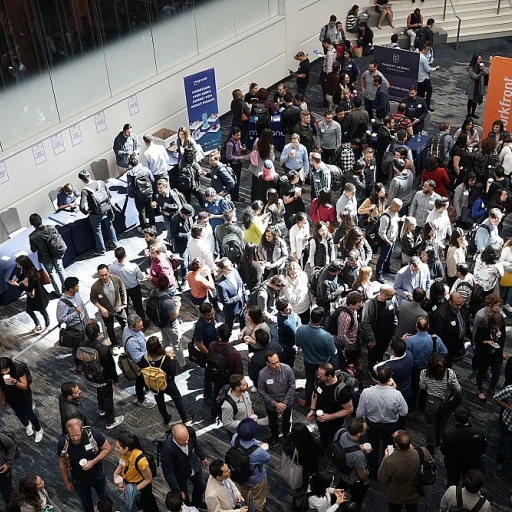Understanding Employee Retention
The Importance of Employee Retention
Employee retention is more than just maintaining a low turnover rate—it’s about cultivating a workplace where employees feel valued, engaged, and invested in the company’s success. Understanding the significance of employee retention is the first step toward building a culture that not only attracts talent but keeps them around.
Why does it matter so much? High turnover can result in a multitude of challenges for businesses, including the loss of institutional knowledge, increased recruitment and training costs, and lower morale among remaining staff. In essence, a high turnover rate can silentlly erode a company’s foundation, affecting its competitive edge and overall performance.
Retaining employees goes beyond offering competitive salaries and benefits. It’s about creating an environment where employees understand their role and value within the organization. This requires delving into effective strategies that address not only the professional needs of employees but their personal and social necessities as well.
A strong retention strategy includes elements like developing company culture, which we will explore, that align with the values and expectations of the modern workforce. You'll find that in a world where remote work is becoming standard practice, adapting to these changes plays a vital role in retention.
Moreover, building a retention-friendly culture involves engaging employees actively—through regular feedback, recognition, and opportunities for growth and development. Simple actions, like ensuring employees feel safe and included, can make significant impacts on their decision to stay with a company. For insights on maintaining team morale and productivity, be sure to explore our guide on
keeping your team happy and productive.
Ultimately, understanding what drives employees and how to respond to these motivations is foundational in crafting a company culture synonymous with longevity and loyalty. By investing time and resources into understanding employee retention, businesses lay the groundwork for sustained success.
Building a Strong Company Culture
Nurturing an Engaging and Supportive Environment
Building a robust company culture is crucial in creating an environment where employees feel valued and engaged, essential for employee retention. At the heart of this culture lies the need for open communication channels that foster transparency and trust. Encouraging leaders to maintain regular, honest dialogues with their teams can significantly impact employees' perceptions of their workplace. It is through these interactions that individuals find a sense of belonging and purpose within their roles.
Moreover, establishing core values that resonate with your workforce is another pillar in constructing a strong company culture. When employees see their personal values aligning with the company's mission, they feel more connected and committed to their work. Recognizing and celebrating achievements that embody these values also contributes positively to the overall morale and motivation.
Additionally, pursuing initiatives that emphasize diversity and inclusivity can significantly enhance the work environment. By embracing different perspectives and creating an atmosphere where every employee feels heard and appreciated, a company can drive collaboration and innovation. For more insights on engaging millennials and fostering inclusivity, you can explore strategies for
keeping millennial employees happy and engaged.
By focusing on these aspects, companies can lay the foundation for a culture that not only retains employees but also attracts new talent, further strengthening their organizational capability and success.
Effective Employee Retention Strategies
Implementing Retention Techniques That Work
Once a company has a robust culture established, it needs to employ effective retention approaches that ensure employees remain committed and satisfied. Recognizing and reinforcing what keeps employees engaged is crucial for decreasing turnover rates.
Providing Recognition and Rewards
Offering recognition and rewards is a powerful way to boost morale and retain employees. Employees crave acknowledgment for their hard work and achievements. This can be in the form of verbal praise, bonuses, or employee of the month awards. A strategic recognition program can cultivate an environment where employees feel valued and motivated.
Flexible Work Arrangements
The demand for work-life balance is stronger than ever. Offering flexible work arrangements, such as remote work options or adjustable hours, can significantly improve employee satisfaction and retention. These initiatives demonstrate that the company is attentive to personal needs, fostering loyalty.
In our current digital era, adapting to remote work is not just a perk but a necessity for many employees. Ensuring seamless integration of remote work into your organizational culture can enhance retention by providing more flexibility and freedom.
Clear Communication Channels
Effective communication within the organization is vital. Keeping employees in the loop about company goals, changes, and growth can enhance their sense of belonging and commitment. Open communication channels where employees can freely express concerns, ask questions, and offer feedback is vital.
Improving employee retention in this manner nurtures a transparent and inclusive work environment.
Fair Compensation and Benefits
While non-financial factors are significant, fair compensation remains a cornerstone of retention strategies. Ensure your salary structure and benefits are competitive within the industry. Regular salary reviews and offering benefits that support well-being, such as health insurance and retirement plans, can help in securing employee commitment.
Introducing these employee retention techniques will strengthen the company’s culture and ensure a fulfilling working environment where employees are eager to stay and contribute to the organization’s success.
The Role of Employee Engagement
Nurturing Employee Engagement to Enhance Retention
Employee engagement is more than just a buzzword in today’s corporate environment. It is a pivotal component in fostering a culture where employees are motivated, committed, and, most importantly, inclined to stay. Understanding the connection between employee engagement and retention is crucial for any company striving for long-term success.
When building a strong company culture, as previously mentioned, ensuring your employees feel engaged is a key aspect. When employees are engaged, they tend to be more productive, show higher job satisfaction, and contribute positively to workplace morale. So, how does one cultivate this engagement effectively?
Start by offering employees a sense of purpose. This can be achieved by aligning their roles with the company's goals and values, and making sure these are communicated clearly. Employees want to feel that they are part of something bigger than themselves. By integrating their daily tasks with your mission, they find meaning in their work.
Regular feedback and open communication channels are also instrumental. Employees need to know how they are performing through constructive feedback, and they should feel comfortable sharing their thoughts and ideas with management. This openness not only boosts their confidence but also encourages innovation and improvement.
Recognizing and rewarding accomplishments, both big and small, is another crucial element. Implement rewards systems that acknowledge hard work and foster a sense of accomplishment. This doesn't always have to be monetary; sometimes, a simple acknowledgment or a thank-you note from a manager can make a significant difference.
Finally, facilitating opportunities for employees to engage with each other, beyond work-related tasks, can greatly enhance engagement. Team-building activities, social events, and cross-department collaborations can build camaraderie and make the workplace environment more enjoyable.
In our journey to create a retention-centric culture, understanding and investing in employee engagement is an indispensable strategy. By implementing these practices, you're not only working towards retaining your valuable team members but also transforming your company into a thriving, adaptive organization.
Learning and Development Opportunities
Nurturing Talent Through Continuous Learning
One of the pivotal aspects of fostering an employee retention-friendly culture, as previously discussed, involves providing ample learning and development opportunities. Offering continuous learning not only aids in personal and professional growth but also fosters a sense of belonging and value among employees.
In today's competitive job market, employees seek more than just a paycheck; they crave opportunities to enhance their skills and progress in their careers. Companies that invest in the development of their workforce tend to have happier, more dedicated employees who are less likely to seek opportunities elsewhere. This investment in learning acts as a springboard for innovation and efficiency, ultimately leading to increased overall productivity.
Creating a culture that prioritizes learning means facilitating access to educational resources, workshops, and courses tailored to various skill levels and areas of interest. Encouraging employees to take part in industry conferences and providing avenues for knowledge exchange within the company can further stimulate their enthusiasm for learning, thereby supporting long-term retention goals.
Moreover, offering mentorship programs bridges the gap between experienced professionals and newcomers. Mentorship not only equips employees with practical insights but also strengthens interpersonal relationships within the company, a crucial component to enhancing overall workplace satisfaction.
In sum, making learning and development central to your organization’s growth strategy plays a critical role in retaining invaluable talent, creating not just an efficient team, but an intellectually thriving workplace aligned with the company's long-term vision.
Adapting to Remote Work
Embracing Flexibility in the Modern Workplace
As companies continue to adapt to the evolving landscape of work, remote work has become a significant factor in employee retention. The shift to remote work has not only changed where employees work but also how they perceive their roles and connection to the company. To build a culture that retains employees, businesses must embrace this change and integrate flexibility into their core values.
Remote work offers employees the freedom to balance their professional and personal lives more effectively. This flexibility can lead to increased job satisfaction and loyalty, as employees feel their needs are being respected. In previous sections, we discussed the importance of a strong company culture and effective retention strategies. Incorporating remote work policies is a natural extension of these efforts, as it demonstrates a commitment to meeting employees where they are, both physically and mentally.
Moreover, fostering a sense of community and engagement among remote workers is crucial. Companies can leverage technology to create virtual spaces for collaboration and social interaction, ensuring that remote employees remain connected to their teams and the organization's mission. This approach aligns with the role of employee engagement in retention, as discussed earlier, by nurturing a sense of belonging and purpose.
Additionally, offering learning and development opportunities tailored to remote work can empower employees to grow within their roles, reinforcing their commitment to the company. By providing access to online training and resources, businesses can support their employees' professional growth, even from a distance.
Ultimately, adapting to remote work is not just about allowing employees to work from home; it's about creating an inclusive and flexible environment that prioritizes their well-being and professional development. This approach will not only help retain current employees but also attract new talent who value a forward-thinking and adaptable workplace.












